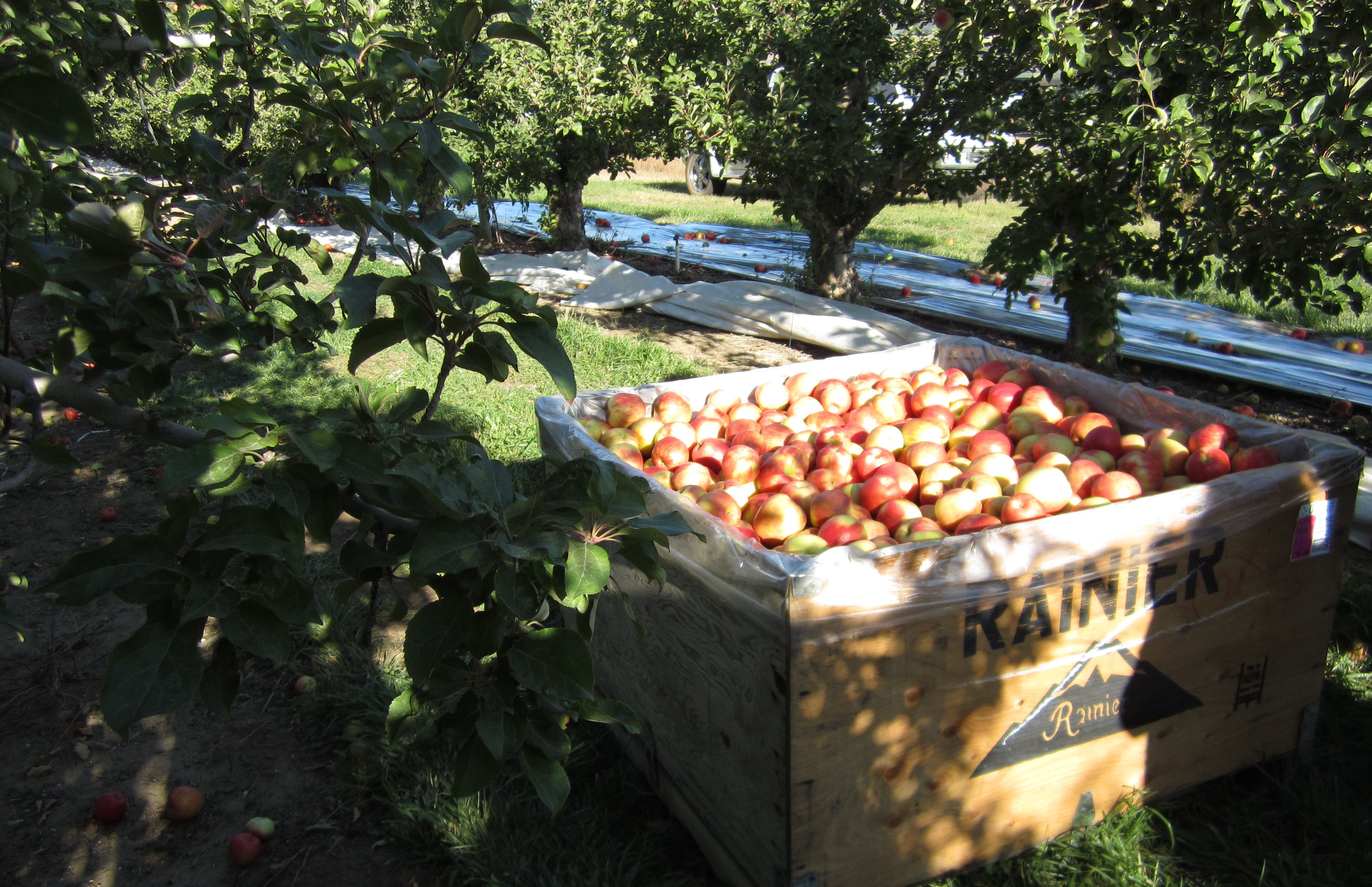Farm Tour Diaries: Washington Apple Harvest


Just how did all those perfect apples get from the tree to your grocery store? Chances are, a lot of them came from Washington State—where around 65 percent of the country’s apples are grown. To see the fall harvest of my fave crunchy fruit first-hand, I recently toured the orchards and packing facility of Rainier Fruit Company, a family-owned operation based in Yakima Valley.
Turns out, there’s a good reason so many apples call this place home. Located east of the snowy Cascade Mountains, apple country is dry, with long, hot days and cold summer nights. This high-desert climate, coupled with the region’s rich volcanic soil, makes the ideal environment for growing apples. One of the biggest producers in the country, Rainier sells 13 varieties, plus cherries, pears, wine grapes, and blueberries.
After farming here for more than a century, these folks have picked up a few handy tricks: today’s apples are increasingly grown on “dwarf” rootstock, so the trees are much smaller than what you’d see in an older orchard. What’s more, newer trees stand extra-close together on vee-shaped trellises, which allow apples to catch more light, use less water, and grow lower to the ground for safer, no-ladder-required picking. “It’s not as pretty, but it’s more eco-friendly,” chuckled president Mark Zirkle, after showing us a Honeycrisp orchard.


Once carefully gathered and trucked to the packing facility, apples travel quickly down conveyor belts—first to be inspected by hand (the ones with imperfections get set aside for things like apple juice and applesauce), then “presized” by a camera-equipped machine that calculates color and size. They’re loaded with other top-notch-looking apples into large wooden crates, and moved to cold storage for up to a year, so that apple lovers can get their fix throughout winter and spring.

So, what to do with apples once you bring them home? I picked up a few tips:
1. Keep them cold Store apples in the fridge, not in a cute bowl on your counter—they will stay fresh for much longer when chilled.
2. Store them separately Keep apples away from other fruits and veggies. Apples naturally release ethylene gas that makes produce ripen faster.
3. Eat the peel It’s loaded with good-for-you antioxidants!
Got a pile of apples? Check out our fave apple-packed recipes here.